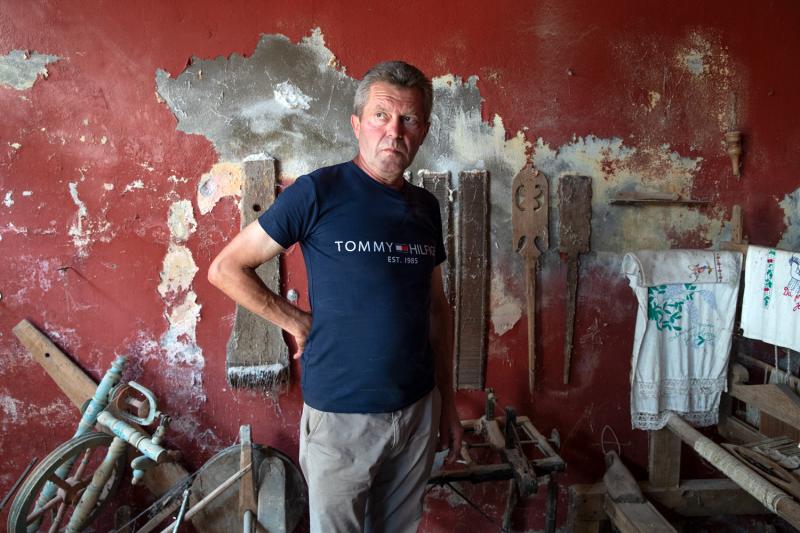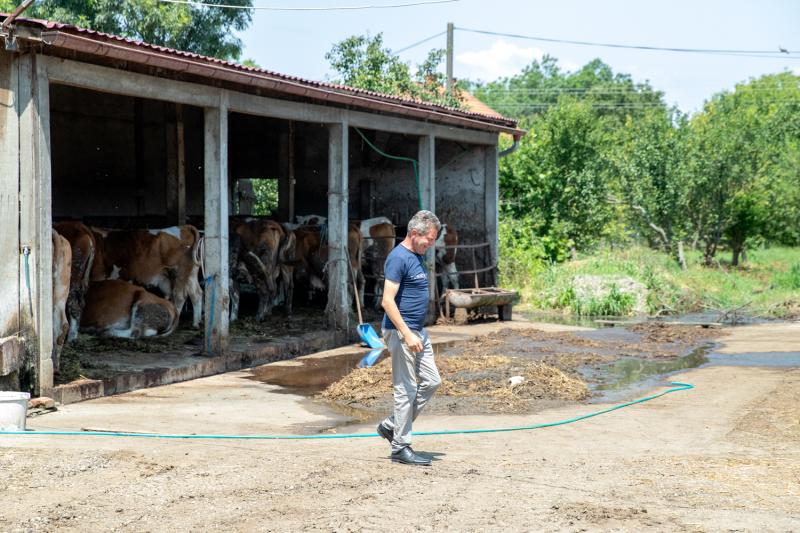Improved flood protection infrastructure brings peace of mind to farmers and other residents of Bosnia and Herzegovina
On May 16 in 2014, everything changed for Brodac, a once prosperous village on the outskirts of the city of Bijeljina that was the epicentre of one of the worst floods in the history of Bosnia and Herzegovina. This calamity also hit one of the largest agricultural producers in the area, Radiša Rikanović Miko, whose entire property was inundated in a matter of a few hours.
“The water gushed from two sides – from the River Drina to the west and from the river Sava to the east,” says Miko.
“These two rivers collided in the village and in a mere 20 minutes, the water level rose to 30 cm above its normal level.”
In a matter of hours, the flood waters hit 2 meters, turning harvest-ready corn and wheat fields into swamps, endangering livestock, and damaging agricultural machinery.
“As soon as I realised I was in a tight spot, I untied the cattle,” says Miko. “The feeling I had at that moment can hardly be conveyed. You are letting go of all you have. All your belongings, gone in a moment.”
The damage to Miko’s farm was estimated at around €61,000.
The European Union and the European Investment Bank, which mobilised €74 million, have helped address the most immediate damage, including repairing river dykes, banks, channels, and pumping stations, to provide greater security from floods for the people of Bosnia and Herzegovina. In addition to the emergency measures, further flood prevention and early warning systems have been introduced, bringing peace of mind to over 600 000 people in the country who live in flood-prone areas.

Flood protection cushions new reality for farmers in Brodac
The EU intervention is vital for a population recovering from such a trauma.
“Frankly speaking, I was in a very dark place afterwards. But, you see your children, other people in distress, and you know you are not alone,” Miko says. “God forbid that anybody should go through this kind of ordeal.”
The flood completely disrupted the serene life of the village. Crop yields decreased immensely due to the impact on soil quality. The mood of the people shifted, and they started to feel anxious every time there was heavy rain.
“Before 2014, people could afford things, even take a day off for their saint’s day,” says Miko. “But when you lose everything in a day, you can never fully catch up. You are constantly lagging behind in spite of all the hard work you invest.”

Flood prevention systems protect lives and property
With some 100 livestock animals and 82 hectares of farmland, in Miko’s household the work starts at 5 a.m. every single day. And it continues into the night. He inspects the stables at least three times a night to check on his 30 dairy cows. His wife and three children all contribute to the daily chores, determined to continue the family business inherited from their grandfather. And they appreciate any support, as life on a farm is full of uncertainties.
To enable the development of flood risk management plans, a €7.3 million technical assistance grant was also arranged through the Western Balkans Investment Framework to prepare flood hazard and risk maps.
“This year was really similar to 2014 with heavy rainfalls and water gushing in all directions,” says Miko. “The River Sava had reached the embankment and part of it overflowed. However, this time, I had no concerns that things would turn out as badly as before. All the critical points from Matković to Brodac village were skilfully repaired, and culverts were left if some parts if the water needs to be drained. “
“Me and the residents of Brodac are really satisfied, we all talked about it. Well done,” says Miko, before running off to join his family for lunch.
- Read about new Sarajevo trams that cut carbon emissions
